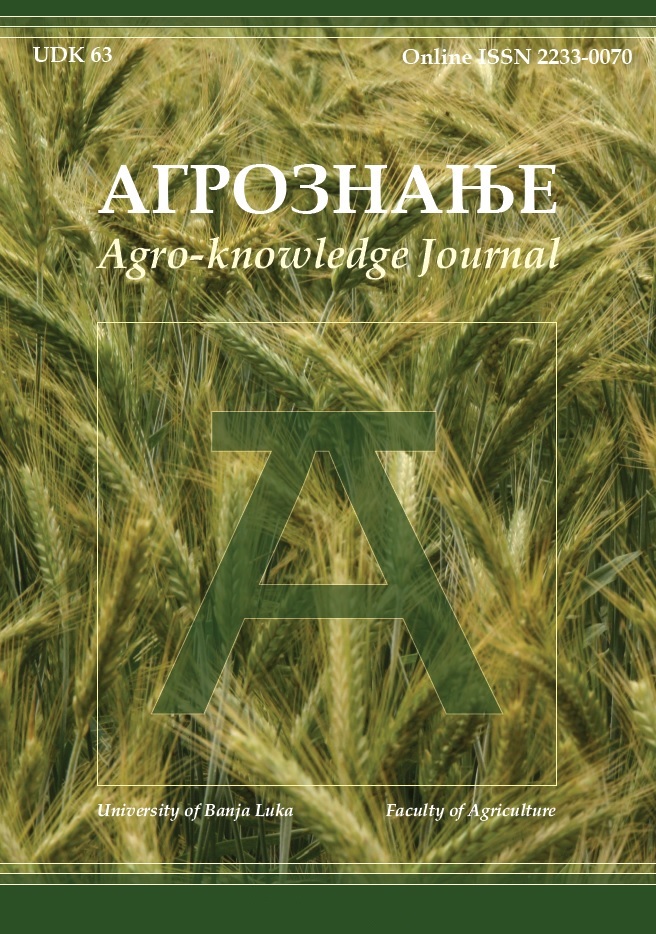Influence of the seeding rate, row spacing, and cultivar on alfalfa forage yield in the first production year
DOI:
https://doi.org/10.7251/AGREN2403251RSAbstract
The cultivated lucerne (Medicago sativa L.) is the most widely grown forage legume, mainly due to its high nutritive quality and yield. The objective of this study was to provide information about the optimal seeding rate and row spacing for alfalfa cultivation under rainfed conditions in the Republic of North Macedonia. Alfalfa was sown in the fall of 2020 using randomized complete block design in a split-split plot arrangement with three replications. The effects of two seeding rates (8 and 16 kg ha-1) and two row spaces (20 and 40 cm) were examined on the fresh forage yield (FFY) and dry matter yield (DMY) of four alfalfa cultivars. Based on the evaluation, the sowing method (row spacing) and cultivar choice have shown a significant impact on the obtained forage yield. Higher average yield of fresh (73.7 t ha-1) and dry (20.3 t ha-1) forage was achieved at a sowing distance of 20 cm. Since the seeding rate did not significantly impact the FFY and DMY, in regions with a temperate climate, it is recommended that lower seeding rates than 16 kg ha-1 should be used in order to have sufficient and cost-effective alfalfa production. The inevitable issues for increasing alfalfa production are the selection of an appropriate cultivar with good adaptability to recent climate change within compatible establishment methods.

